Explore Turkey’s Dormant Volcanoes: Hidden Wonders Worth Visiting
One of the world's most impressive natural phenomena, volcanoes have attracted attention for centuries with both their destructive and life-giving effects. Are there any active or extinct volcanic mountains in Turkey? The answer is Yes! Although there are currently no active lava-spewing volcanoes in Turkey, many mountains that have been the scene of volcanic activity throughout history still retain their geographical importance. In this article, we will explore in detail the extinct or potentially risky volcanic mountains in Turkey, along with their geological structure and the natural beauty they offer. So, where are the volcanic mountains in Turkey? Let's explore together 👇
How are volcanoes formed?
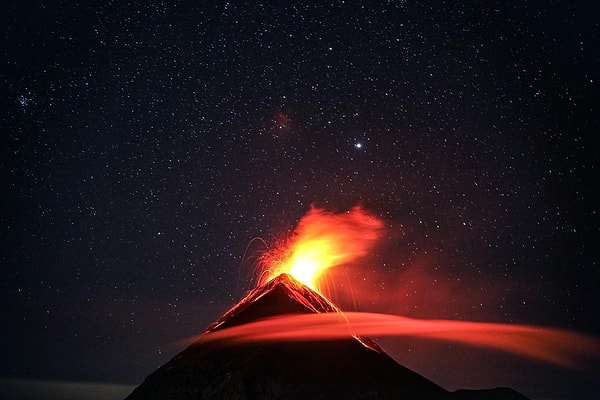
Volcanic mountains are formed when magma in the ground rises to the surface. After reaching the surface, this molten rock, lava, cools and solidifies, forming volcanic mountains over time. This process also means the opening of a channel that allows magma to reach the surface. Although these channels have cooled and closed over time, scientists say that it is not correct to say that the volcanoes are completely extinct. These extinct volcanoes in Turkey may still pose some danger. Let's discover Turkey's potential Etnas together.
1. Mount Nemrut
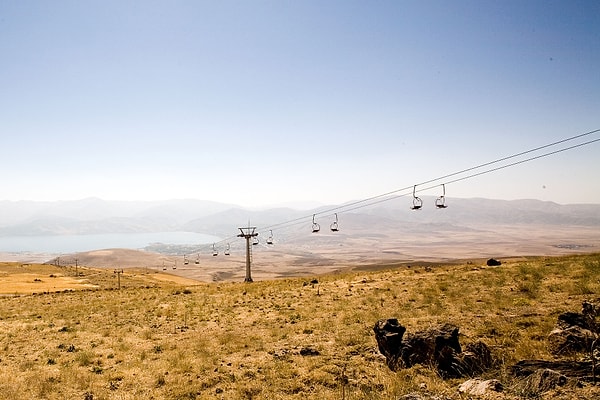
Mount Nemrut, which has been silent for about 600 years, is technically considered active but is classified as an extinct volcano since it has not spewed lava for a long time. Located west of Lake Van, within the borders of Adıyaman, this impressive mountain is also home to a crater lake. Thanks to its rich mineral soils, a wide variety of plants have developed in the region. You should definitely add Mount Nemrut to your list of places to visit to appreciate these unique natural wonders.
2. Mount Süphan

Süphan Mountain, which rises within the borders of many settlements, is situated between the districts of Adilcevaz, Patnos, Malazgirt, and Ahlat. Visitors who wish to climb the mountain can reach the summit during certain months of the year by obtaining permission from the relevant authorities in Adilcevaz. Turkey's third-highest mountain, Süphan, offers a unique experience with its mesmerising view of Lake Van during the ascent.
3. Mount Ararat
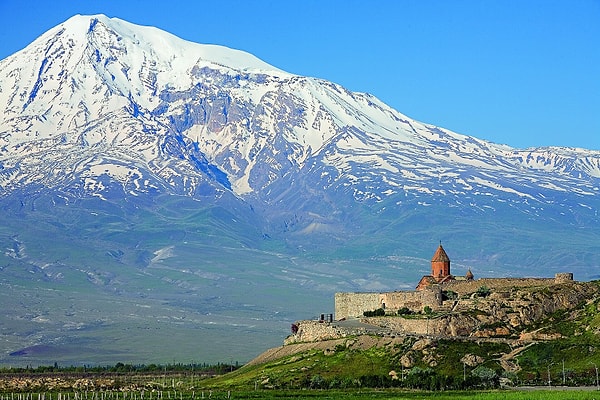
The subject of folk songs, Mount Ararat, Turkey's highest peak, remains covered with snow throughout the year, featuring a glacier layer of more than 5 square kilometres. This volcanic mountain consists of two separate peaks, Small Ararat and Great Ararat, and is located within the borders of both Ağrı and Iğdır provinces. Mount Ararat also holds significant importance in Judaism and Christianity.
4. Mount Erciyes
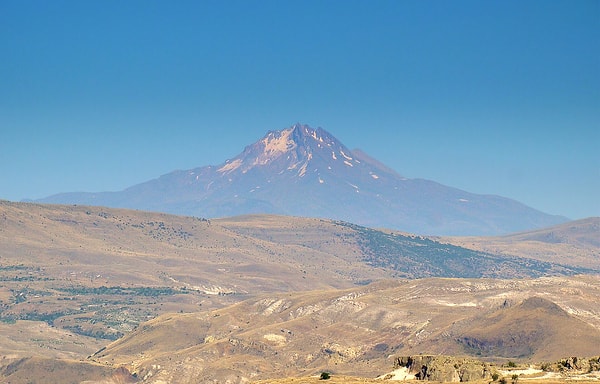
Named after the Erciyes region within the borders of Kayseri province, this volcanic mountain is considered extinct as it has not released lava since the Roman period. Adjacent to Erciyes, Sultansazlığı showcases the rich wildlife of the area. Research indicates that a sea existed here 20 million years ago, and land was formed over time due to crustal movements, leading to the emergence of Mount Erciyes following the first volcanic eruption. Today, Erciyes is one of Central Anatolia's most prominent geological sites and attracts tourists with its winter sports opportunities, such as skiing.
5. Mount Hasan

Mount Hasan, which has two peaks like Mount Ararat, comprises hills called Büyük Hasan and Küçük Hasan. Throughout history, the lava from this mountain has contributed to the formation of new landforms in the surrounding area, with Melendiz Mountain being one of these formations. Located within the borders of Niğde and Aksaray provinces, Mount Hasan supports three species of trees, including oak and poplar, on its slopes. It also offers visitors unforgettable experiences for mountaineering and winter sports.
6. Mount Göllü

Mount Göllü, located within the borders of Niğde province and featuring a crater lake at its summit, has historically been a source of livelihood for the local population, particularly through the processing and sale of obsidian (volcanic glass) stones found in the mountain. Archaeological research reveals that Mount Göllü was home to multiple civilisations. A visit here allows you to appreciate both the wonders of volcanic nature and the traces of the past.
7. Mount Tendürek
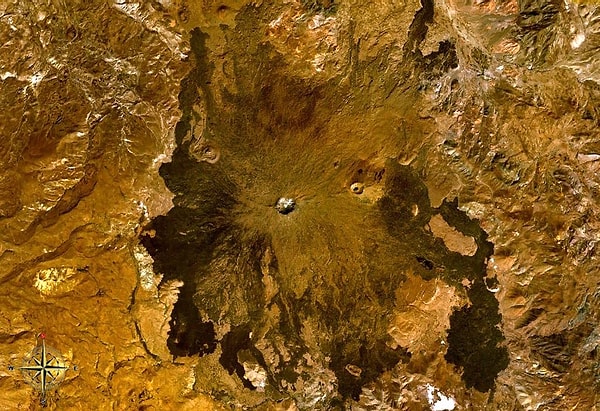
Mount Tendürek, situated between Doğubayazıt in Ağrı and Çaldıran in Van, is another remarkable volcanic structure. During observations conducted on the Çaldıran side, carbon dioxide emissions were detected, and it was determined that the source of this gas was magma located underground. Although the high areas covered with craters are devoid of vegetation, plant diversity increases as the altitude decreases. Mount Tendürek also boasts water resources rich in flora.
8. Karacadağ (Diyarbakir-Şanlurfa)
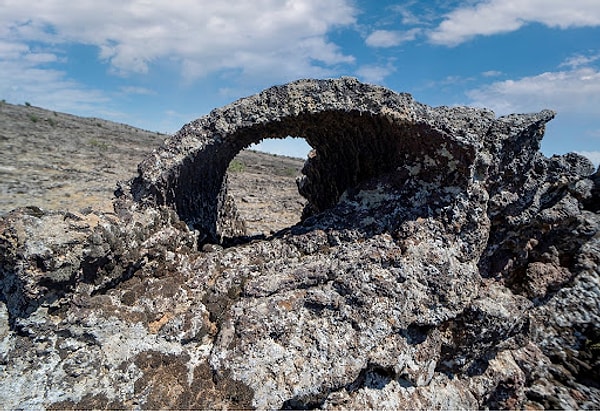
Karacadağ, located between Diyarbakır and Şanlıurfa in the Southeastern Anatolia Region, is a shield volcano where basalt lava spreads over large areas. It has a flatter structure compared to other volcanoes. Thanks to its volcanic structure, the surrounding lands are very fertile.
9. Mount Melendiz (Niğde-Aksaray)

Mount Melendiz, which was shaped by the lava activities of Mount Hasan, also played a role in the formation of the Ihlara Valley in Aksaray. As a result of the erosion of the lava in the region over time, valleys, fairy chimneys and canyons were formed.
10. Kula Volcanoes (Manisa)
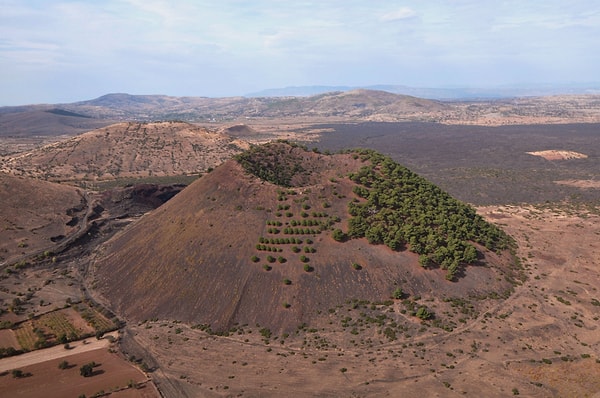
Located in the Aegean Region, Kula Volcanoes is one of the youngest volcanic areas in Turkey. This region, which also has UNESCO Global Geopark status, attracts attention with its lava flows, volcano cones and tuff fields. It is thought to have been active until about 15,000 years ago.
Keşfet ile ziyaret ettiğin tüm kategorileri tek akışta gör!

Send Comment